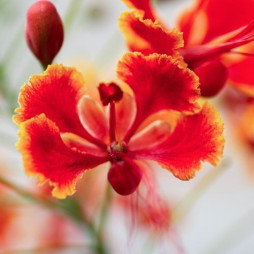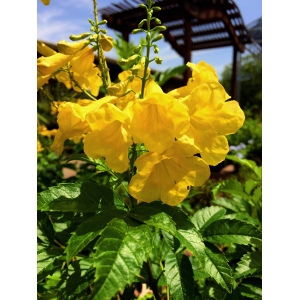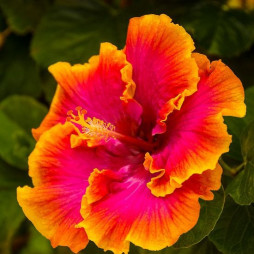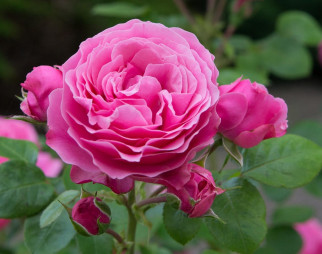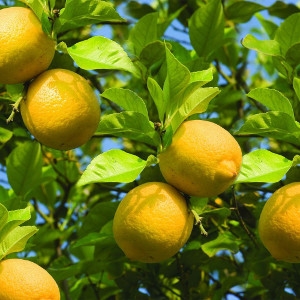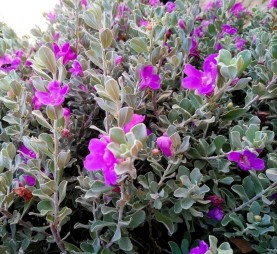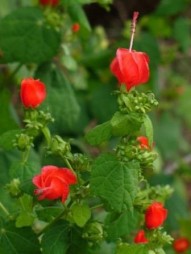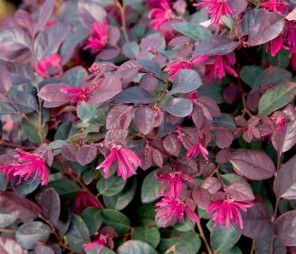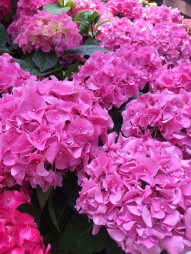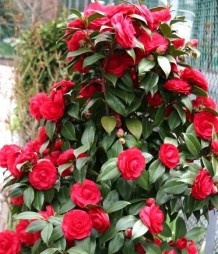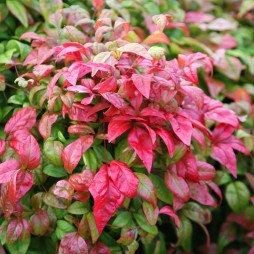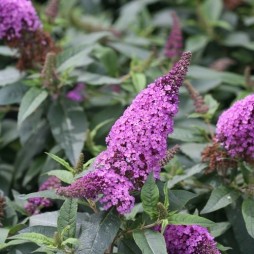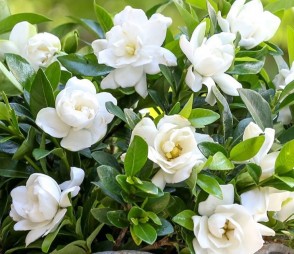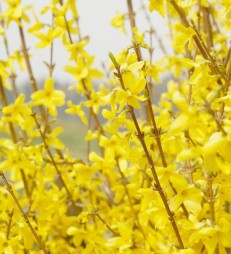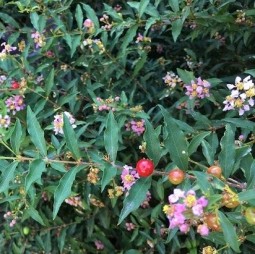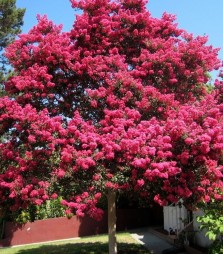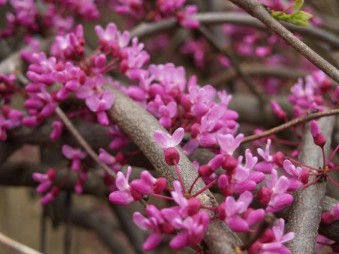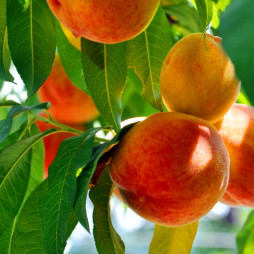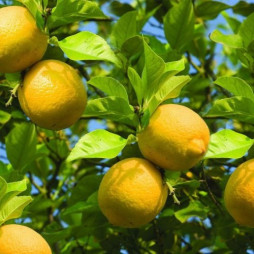Product Catalog
Description
Low growth habit makes this an excellent choice for a low border plant. Small, dark green leaves turn a rich, burgundy-red in winter for cool season interest. Adapts to a wide range of cultural conditions and mixes well in almost any landscape. Evergreen.
Regularly $16.99!
Rates
Please contact us for current pricing and availability.
Description
The national flower of Barbados is one of the most attractive heat loving plants for Central Texas. The species name pulcherrima literally means “very pretty” and it definitely lives up to the name. The blooms are clusters of orange-red with a tinge of gold on the edges. Easy to grow in alkaline to acidic, well-drained soils, fast growing and bloom best in full sun. Considered drought tolerant once established. Great for attracting butterflies.
Rates
Please contact us for current pricing and availability.
Description
Also known as yellow bells, hardy yellow trumpet, or yellow alder, the tropical esperanza is easily recognized by its large masses of lightly scented, golden-yellow, trumpet-shaped flowers amid the dark green foliage. It is native to Texas and found growing wild on rocky slopes near San Antonio and in the Trans-Pecos region and blooms from spring through fall. While esperanza perennials are grown in the landscape as shrubs or container plants for their beauty, they were once quite popular for their medicinal use as well.
Esperanza needs to be grown in warm conditions; preferably in full sun though afternoon shade is suitable as well. While esperanza can tolerate a wide range of soil conditions, it’s preferable they be given fertile, well-draining soil. Therefore, any poor soil should be amended with compost to improve its overall health and drainage. Esperanza is extremely heat and drought tolerant.
Rates
Please contact us for current pricing and availability.
Description
The hibiscus is a national symbol of Haiti and the national flower of nations including the Solomon Islands and Niue. Known for their showy flowers, hibiscus are an easy way to add a tropical flair to your garden. When you know how to care for hibiscus plants, you will be rewarded with many years of lovely flowers. Although warm, humid conditions are ideal for tropical hibiscus, you may want to provide a little afternoon shade when it’s overly hot. Whether in containers, flowerbeds or landscape shrubs, hibiscus are a wonderful addition to attract butterflies, bees, and hummingbirds.
Rates
Please contact us for current pricing and availability.
Description
Roses have a long and colorful history. They have been symbols of love, beauty, war, and politics and have been used as confetti at celebrations, for medicinal purposes, and as a source of perfume. It wasn't until the late eighteenth century that cultivated roses were introduced into Europe from China. Most modern-day roses can be traced back to this ancestry. These introductions were repeat bloomers, making them unusual and of great interest to hybridizers, setting the stage for breeding work with native roses to select for hardiness and a long bloom season. Many of these early efforts by plant breeders are of great interest to today's gardeners.
Rates
Please contact us for current pricing and availability.
Description
Growing wild in Japan, China and Korea, Japanese maples can create a focal point to really set off your home’s curb appeal by standing alone as a single spectacular centerpiece, focal point, or accent, as well as work together to provide a dramatic backdrop. Found in the understory of woodlands where sunlight is dappled, a location in partial shade is fitting. Providing the right amount of light can be a balancing act. Too much light can damage delicate leaves but for best color, most maples need a location with part day's sun.
Rates
Please contact us for current pricing and availability.
Description
Just a handful of states in the US can claim climates that are suitable for growing citrus trees and Texas is one of them. They are best planted in the late spring after the weather has warmed up and there is no danger of frost. They will provide wonderful fruit and make a beautiful and fragrant when blooming, to your landscape.
Citrus trees need plenty of rich, well-drained soil and ample sunlight as well as 40 to50 inches of rain to get an excellent harvest. With Central Texas averaging slightly under that amount annually, it will need supplemental watering for the life of the tree. Avoid the trees sitting in saturated water as that will cause it to quickly die. The unpredictable winter weather in this area does sometimes create challenges since it can affect the maturity time of the fruit and damage or kill some trees when temperatures fall below 28 degree so insure the tree is protected during cold weather. Citrus trees flower and produce fruit on both new and previous year’s growth so wait to prune until after they have bloomed in the spring.
Rates
Please contact us for current pricing and availability.
Description
In the early spring of Texas, the air is filled with the intoxicating aroma of the sturdy Mountain Laurel tree. Native to Texas and Northern Mexico, their fragrant violet-blue blooms are reminiscent of artificial grape flavoring and are a favorite of hummingbirds and bees. They are evergreens so they keep their beautiful dark green leaves all year. Mountain Laurels make a great addition to your landscaping whether it be a patio, yard or outdoor courtyards.
Although slow-growing, Mountain Laurel is one of the best trees for any landscape. They can be shaped to resemble a shrub or allow them to grow into a small size tree. A beautiful, informal hedge can be created by planting a row of Texas Mountain Laurel and letting the shrubs develop without shearing. The dense evergreen foliage can also be used to screen an unattractive view. They prefer full sun and are extremely drought tolerant so once established, very little watering is required.
Rates
Please contact us for current pricing and availability.
Description
Native to areas of Texas and Mexico, Texas sage features gorgeous silvery foliage and attractive lavender-purple flowers on and off from spring, through the summer, and into autumn.) The flowers attract bees, butterflies, and other pollinators. There are numerous ways to utilize Texas sage in your landscaping that will add color and beauty to your outdoors. It grows well in container on sunny decks and patios as well as garden beds, borders or hedges. Because of its drought tolerance, Texas sage is often used in xeriscaping. Prune Texas sage as necessary and any time of the year to keep the size and shape you prefer.
Rates
Please contact us for current pricing and availability.
Description
Native to East, South and Central Texas, growing in shady, well-drained areas along the banks of streams and limestone canyon walls, Turks Cap is a wonderful shrub plant with gorgeous red flowers attractive to butterflies, bees, and hummingbirds. Though it has never been verified, Turk’s cap apparently seems to have received its name by the flower that resembles a fez, the red felt hat formerly worn by Turkish men. The red flowers are perfect for a little burst of color after a good portion of your garden may have stopped flowering.
Rates
Please contact us for current pricing and availability.
Description
The Loropetalum, an evergreen shrub that looks good in just about any landscape, is also known as Chinese witch hazel or Chinese fringe flower and puts on a beautiful show in spring with small, frilly flowers, typically pink. It is native to China, Japan, and the Himalayas and is a member of the witch hazel family.
Rates
Please contact us for current pricing and availability.
Description
It is hard to miss the stunning blooms of hydrangeas — changing blue in acidic soil, pink in that with more lime. And of course, the white hydrangeas, with blooms resembling large snowballs. The colorful changing flowers is one reason why growing hydrangeas is so much fun. They’re not only easy to grow but are also quite hardy and resistant to most pests and diseases. And with numerous varieties to choose from, you are certain to find one that is right for you. Although there are many types of hydrangeas, most can be grown in full sun or partial shade. Many hydrangeas do not like extremely hot conditions, so try to locate them in an area where they can enjoy some afternoon shade. While they can be grown in a wide range of soils, hydrangeas typically prefer rich, moist soil that drains easily. Amending the soil with compost prior to planting is helpful.
Rates
Please contact us for current pricing and availability.
Description
Having been in cultivation for more than a 1000 years and standing for faithfulness and longevity in the language of flowers, the Camellia shrub is one of the points of pride in Southern gardening. They are dense shrubs with brilliant foliage and offer bright, long-blooming flowers that come in white, pink, red or streaked and the blooms can be single or double. Camellias make a beautiful addition to winter wedding flower arrangements.
Rates
Please contact us for current pricing and availability.
Description
Also known as Cuban buttercup, buttercup bush or yellow alder, the yellow, buttercup-like, five petaled flowers brighten up bare spots in the landscape with flowers that bloom in the mornings and last most of the day. The dark green serrated, oval shaped foliage, which is fragrant, provides a perfect backdrop for the showy, two-inch wide blooms. Native to the Caribbean, the fast growing evergreen perennial shrub attracts butterflies as well as other pollinators and is heat and drought tolerant with continued blooming during the hottest part of the summer.
Rates
Please contact us for current pricing and availability.
Description
The extremely popular Dwarf Nandina Firepower gets its name from the colorful effect that it brings to your landscape. Dwarf Nandina Firepower begins with vibrant lime-green foliage during the spring and summer and as the weather starts to cool, the magic show kicks into gear as the leaves turn into a showstopper during the fall with leaves that turn into a flaming display of brilliant red and orange. This performance will last throughout the fall and winter, enhancing other colors in the winter landscape. Dwarf Nandina Firepower can grow up to 3 feet in height. Using as a border along driveways, entryways or property lines for that splash of fall and winter color.
Rates
Please contact us for current pricing and availability.
Description
With masses of blooms that come in long, spiked trusses as well as a variety of colors from white, pink and yellow to blue and purple, the butterfly bush blooms from summer to fall and creates a wonderful attraction for butterflies. The popularity of butterfly bushes is no surprise as they are beautiful, easy to grow and require minimal day-to-day care. They're also resistant to insects, drought, and stress. Butterfly bushes usually grow around 5 to 7 feet tall which makes it a fantastic statement shrub to plant at the back of landscapes.
Rates
Please contact us for current pricing and availability.
Description
With their rich color and year-round visual interest, the Japanese barberry makes a stunning addition to any landscape by combining toughness, adaptability and versatility. Native to Japan and Southeast Asia, Japanese barberry has small, oval leaves that vary from green to a dark reddish purple with stems that have single spines along their length. Small, yellow flowers are produced during the spring followed by bright-red, long-lasting berries often into winter. Japanese barberry is a very dense plant due to the multitude of small twigs and branches and works very well as a hedge because of their uniform growth pattern but can also be grown in containers.
Rates
Please contact us for current pricing and availability.
Description
Loved for their intoxicatingly fragrant, creamy white flowers and thick, glossy leaves, gardenias, synonymous with the south, are actually native to China and Japan and named for Alexander Garden, a Scottish physician and botanist who lived in Charleston, South Carolina, in the late 1700s. Long-lasting blooms appear mostly in spring and summer, though some varieties bloom again in fall. No matter the season, if you have gardenias in your garden, passersby will be sure to smell them well before they see them. Plant them near a path or next to a deck, patio, swimming pool or other sitting area so you can really appreciate the perfume.
Rates
Please contact us for current pricing and availability.
Description
One of the best ways to welcome the arrival of spring is with the profusion of rich, golden yellow blooms covering graceful, arching branches. Forsythia is a fast-growing, hardy shrub that bursts forth into bloom in late winter, providing a sunny scene before the remainder of the landscape starts to green up. blooms early — providing a sunny sight before the rest of the landscape greens up. The forsythias foliage is a deep green color and the serrated leaves act as a neutral backdrop for other plants. Sometimes they will even put on little show in fall with the leaves turning a deep purple just before they fall.
Rates
Please contact us for current pricing and availability.
Description
Staking a claim to its own version of the beautiful and dainty cherry blossoms, Texas proudly boasts of the native, tough and unique dwarf Barbados cherry shrub. It produces small pink and white, slightly fragrant blooms similar to a crepe myrtle, from spring through the fall with small red berries that come along late in the blooming season. The berries are edible but somewhat tart and are also attractive to songbirds. The blooms are highly attractive to hummingbirds, bees and butterflies.
Rates
Please contact us for current pricing and availability.
Description
All across the South, their visible love affair with crepe myrtles is very evident. Few trees can match the combination of spectacular, showy summer flowers, colorful autumn foliage and attractive sculptural trunks as the crepe myrtle. They range in size from dwarf selections that grow less than 3 feet tall to several that reach upwards of 30 feet. Know the mature height of a plant before you buy it and plant the proper size for the site. Crepe Myrtles are available in white, lilac, purple and a variety of shades of pink and red.
Rates
Please contact us for current pricing and availability.
Description
Putting on a beautiful in late winter/early spring with clusters of tiny magenta buds swelling into showy mauve, pink flowers before the leaves appear, the ornamental redbud’s long-lasting blossoms put on a show for two to three weeks. The trunk of the redbud commonly divides close to the ground, creating an interesting multi-trunk shape with graceful arched branches and a rounded crown. Beautiful heart-shaped leaves bloom a reddish color, turn dark green in summer and then a bright canary yellow in autumn. The flowers also give rise to clusters of beanlike pods that remain on the tree into winter. Adding redbud trees to landscapes is a great way to add brilliant color and visual interest.
Rates
Please contact us for current pricing and availability.
Description
What can be more delicious than picking a ripe, ready to eat fresh apple or peach off your own tree. Varieties that are excellent for the central Texas climate are peach, pear, fig, plum, pomegranates, apple and olive among others. While it may seem that fruit trees may seem like too much of a challenge to grow, paying attention to and following planting instructions, most fruit trees will flourish with minimum maintenance. These trees will produce fruit for many years and sometimes lasting into several decades.
The proper number of chilling hours, i.e. the number of hours where the temperature is above 32 degrees and below 45 degrees, are the basic requirements for fruit trees as well as deep soil, space and adequate water. Some fruit trees require a certain number of these chilling hours to come out of dormancy. Fruit producing tress will need full sun exposure as well as good drainage. Be sure to consistently water your tree after planting to insure it has a long and healthy life as well as many fruit bearing years.
Rates
Please contact us for current pricing and availability.
Description
Just a handful of states in the US can claim climates that are suitable for planting trees in the middle of winter and in Central Texas, October through March is known as tree planting season. The winters are mild enough that freezing won’t be an issue as the tree will begin sending out roots to its new home before the heat of the summer sets in.
There are many wonderful varieties to choose from but the most popular is the Live Oak: strong, sturdy, and majestic. Live Oaks are drought resistant, easy to care for, and their large, stretching limbs provide lots of shade from the strong Texas summer sun with many reaching widths of 100 feet or more Other varieties popular in this area are Yaupons with their bright red berries during the winter, Crepe Myrtles with their glorious blooms in a variety of colors that signal that summer has arrived, Southern Magnolias with their shiny dark green leaves and elegant cream colored blooms as well as Japanese Maples and Ornamental Pears that turn brilliant colors during the fall.
Rates
Please contact us for current pricing and availability.


